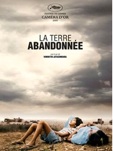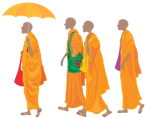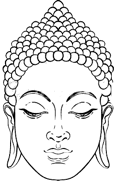Sri Lanka the paradise on earth...
An island that captivates to the point of wanting to return again and again ....
Many compare Sri Lanka to a gem: we talk about the pearl of the Indian Ocean, the jewel of Asia, some citing a diamond pendant would be carefully attached to southern India, others speak of resplendent island or earthly paradise.
Serendivis for the Romans, Taprobane for the Greeks, Serendib for the Arabs and Persians, Cerentivu for Tamils, Ceylon for Europeans is an island that has attracted and still attracts many people throughout history.
How many tourists flock here like they were in the Garden of Eden, carefree, happy, sometimes very casual because tourism is easy, not yet dangerous, and still relatively cheap.
It is true that Ceylon looks like a "paradise":
-
 with a brightness to shout a photographer. It intensifies the shades of green vegetation and the deep blue skies, making the island deeply photogenic. Even in the rainy season, shades of gray are intense and rarely neutral, declining the range of colors from black to purple.
with a brightness to shout a photographer. It intensifies the shades of green vegetation and the deep blue skies, making the island deeply photogenic. Even in the rainy season, shades of gray are intense and rarely neutral, declining the range of colors from black to purple. -
 with ruffled by the breeze palm-fringed beaches, with often rough waves and impressive sea currents, with vegetation and lush forests, a profusion of prolific flora and wild fauna, rice and beautiful tea plantations out of sight, a climate which comes in variations that make the island pleasant, whatever the season or where you went.
with ruffled by the breeze palm-fringed beaches, with often rough waves and impressive sea currents, with vegetation and lush forests, a profusion of prolific flora and wild fauna, rice and beautiful tea plantations out of sight, a climate which comes in variations that make the island pleasant, whatever the season or where you went. -
 with ruins to make jealous an institute of archeology, such as prehistoric tombs Ibbankatuwa Ancient Burial Grounds of the 10th century BC, the ruins of Anuradhapura capital of the island from the 3rd century BC to 10th AD Polonaruwa capital the 11th to 13th century AD, the ruins of Mandalagiri Vihara Medirigiriya, those palaces and fortresses such as Sigiriya and Ritigala. Many sites, each telling their way past borrowing of invasions, creations, destructions. Must be held the cultural richness of the island and the roots of his people.
with ruins to make jealous an institute of archeology, such as prehistoric tombs Ibbankatuwa Ancient Burial Grounds of the 10th century BC, the ruins of Anuradhapura capital of the island from the 3rd century BC to 10th AD Polonaruwa capital the 11th to 13th century AD, the ruins of Mandalagiri Vihara Medirigiriya, those palaces and fortresses such as Sigiriya and Ritigala. Many sites, each telling their way past borrowing of invasions, creations, destructions. Must be held the cultural richness of the island and the roots of his people. -
 with temples and pilgrimages charged with a deep devotion. Mihintale claiming the scoop of implantation of Buddhism in the island in the 3rd century BC, Matale Aluvihara monastery where the first Buddhist Council held in the 1st century BC in which was written the first collection of buddhist texts original: the Tipitaka (burned by the British in 1848), through a multitude of more or less ancient temples scattered throughout the island, leading to Kataragama, a meeting of all faiths (except Christians! ) in the context of unimaginable tolerance.
with temples and pilgrimages charged with a deep devotion. Mihintale claiming the scoop of implantation of Buddhism in the island in the 3rd century BC, Matale Aluvihara monastery where the first Buddhist Council held in the 1st century BC in which was written the first collection of buddhist texts original: the Tipitaka (burned by the British in 1848), through a multitude of more or less ancient temples scattered throughout the island, leading to Kataragama, a meeting of all faiths (except Christians! ) in the context of unimaginable tolerance. -
 with points of interest as rich and varied as waterfalls, colonial ruins, nature reserves, small temples and unknown villages, forgotten as Maduwanwela Walauwa palaces, gem mining, special places as Adam's Peak, the Lipton Seat, World's End, and all those craftsmen who still practice endangered trades such as potters, tinsmiths, weavers, blacksmiths, etc ...
with points of interest as rich and varied as waterfalls, colonial ruins, nature reserves, small temples and unknown villages, forgotten as Maduwanwela Walauwa palaces, gem mining, special places as Adam's Peak, the Lipton Seat, World's End, and all those craftsmen who still practice endangered trades such as potters, tinsmiths, weavers, blacksmiths, etc ... -
 with varied cooking, contrary to what suggests Rice & Curry served everywhere. Murunga and taste of asparagus, mangoustant slightly tart, different mango competing without equal that of Jaffna, pink bananas sweet tasty from Kandy area, curd, yogurt made with buffalo milk, kept cool in mud pot, sweetened by kitul syrup that has nothing to envy to the maple syrup, from aloe vera soups to different sambars, kalu dodol from Hambantota, faluda from Wadduwa, the sherbet of Batticaloa the island is also a paradise for gourmets.
with varied cooking, contrary to what suggests Rice & Curry served everywhere. Murunga and taste of asparagus, mangoustant slightly tart, different mango competing without equal that of Jaffna, pink bananas sweet tasty from Kandy area, curd, yogurt made with buffalo milk, kept cool in mud pot, sweetened by kitul syrup that has nothing to envy to the maple syrup, from aloe vera soups to different sambars, kalu dodol from Hambantota, faluda from Wadduwa, the sherbet of Batticaloa the island is also a paradise for gourmets. -
 especially with a Small People (as opposed to an emerging and interested middle class) respectful of its history, its traditions, its values whose hospitality, warmth, softness are legendary. I mean by Small People the one who is the base of the country, who goes to the temple every day hoping that one day the conditions of life will improve, one who works hard to live while the elite and the oligarchs brew the fortunes generated by tourism, the one that passes by the redistribution of wealth, which must pay bribes to have access to a little justice, the one who gets arrested by the police every day to pay some "pocket money ".
especially with a Small People (as opposed to an emerging and interested middle class) respectful of its history, its traditions, its values whose hospitality, warmth, softness are legendary. I mean by Small People the one who is the base of the country, who goes to the temple every day hoping that one day the conditions of life will improve, one who works hard to live while the elite and the oligarchs brew the fortunes generated by tourism, the one that passes by the redistribution of wealth, which must pay bribes to have access to a little justice, the one who gets arrested by the police every day to pay some "pocket money ". -
 With a rich and varied artistic culture, folklor and creativity. The Sri Lankan cinema produces a few pearls like Baddeegama, the village in the jungle (1980) directed by Lester James Peries from the book by Leonard Woolf, which denounces the peasants' particularly difficult living conditions under a corrupt and insensitive colonial administration. The abandoned land (2006) of Vimukthi Jayasundara which raises the question of hope on an island bruised by 20 years of war. Gamperaliya, change in the village (2009) and the Domaine (2003) of Lester James Peries which tell the story of families, or ordinary villages. Ini Avan, The One Who Returns (2013) by Asoka Handagama who tells how an ex-Tamil fighter who returns to his village is confronted with hatreds of the past, shady trafficking and rancor which are so many minefields for the returning. This is my moon by Asoka Handagama, which tells a story between a deserter Sinhalese soldier, followed by a Tamil woman he abused, in full conflict with the Tamil rebels. Their arrival in a small village abandoned will shake the lives of the inhabitants.
With a rich and varied artistic culture, folklor and creativity. The Sri Lankan cinema produces a few pearls like Baddeegama, the village in the jungle (1980) directed by Lester James Peries from the book by Leonard Woolf, which denounces the peasants' particularly difficult living conditions under a corrupt and insensitive colonial administration. The abandoned land (2006) of Vimukthi Jayasundara which raises the question of hope on an island bruised by 20 years of war. Gamperaliya, change in the village (2009) and the Domaine (2003) of Lester James Peries which tell the story of families, or ordinary villages. Ini Avan, The One Who Returns (2013) by Asoka Handagama who tells how an ex-Tamil fighter who returns to his village is confronted with hatreds of the past, shady trafficking and rancor which are so many minefields for the returning. This is my moon by Asoka Handagama, which tells a story between a deserter Sinhalese soldier, followed by a Tamil woman he abused, in full conflict with the Tamil rebels. Their arrival in a small village abandoned will shake the lives of the inhabitants.

Sri Lanka is one of the few countries where, once we have visited all that is "sold" as inevitable, there is much more to discover off tracks. And usually it's free!
Sri Lanka the land of gods and devils...
I will not forget as long as the scenes of this paradise are sometimes a hell for those who live there and those who go there sometimes. The discovery of beautiful things and good people should not obscure the dark side of reality.
Observationsshared by Lonely Planet and the Library of Voyageur - Gallimard. Documentary - Exclusive investigation - Sri Lanka the dark side of paradise - M6- 09/07/2017
Say them does not prevent from appreciating, it can at least go beyond appearances.
I went there in 1980 (just before the war, during the first attacks in Colombo) in 2001 and 2008 (during the war and the aftermath of the bombing of the airport), in 2009 (just after the end of war), in 2013, 2015 and 2017 (in the tourist boom) in 2019 a few months after the attacks in April.
I have seen a number of changes, not necessarily for a wonder.
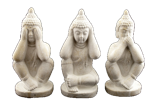
So, must we "see nothing, hear nothing, say nothing"
for the illusion of paradise to endure ?
-
✴ because, as in Burma, behind the apparent tolerance of communities lies a deeply rooted communitarianism: there is no separation between politics and religion, which produces a fierce buddhist nationalist trend, supported by the radical group Bodu Bala Senafar from the foundations of Buddhism. Many Buddhist monks and many have taken up the cause of inter religious and ethnic conflicts, against Hindus, Tamils, Christians, Muslims. With a rise since the end of the war. In 2013 120 places of Christian prayers and twenty mosques, in 2014 60 churches were attacked by buddhists. In March 2018 a mosque and Muslim shops were attacked in the Kandy region.
-
✴ because, as in India, a large number of women experience domestic or family violence and are sexually harassed, but hardly ever complain, because they have been educated in the submission. It can be seen on the walls, including the poster campaign encouraging women to complain to no longer let him do, what they do not, if not actually heard in a macho yet Buddhist country! http://www.dailynews.lk/local/until-rice-boils-over-my-foot http://www.humanrights.asia/news/ahrc-news/AHRC-ART-041-2012
-
Recently Sri Lanka becomes a destination at risk for women. See tips to travelers French government, and Lonely Planet
-
http://tongs-et-srilanka.blogspot.fr/2013/07/deconseille-aux-femmes-seules.html http://voyage.gc.ca/destinations/sri-lanka
http://www.diplomatie.gouv.fr/fr/conseils-aux-voyageurs/conseils-par-pays/sri-lanka-12338/
We begin to talk about some rapes of foreign tourists.
-
This is not only about thugs, but also some drivers, guides, members of an elite, like Sampath Vidanapathirana, politician close to the ex-president, who during a Christmas dinner 2011 in a Tangalle restaurant, did not bear that Westerners refuse to dance with him. With her companions, they created a general brawl, killed the companion of one her, in order to rape her into a gang. The case is still not settled legally! http://www.salem-news.com/articles/january052012/lanka-rape-murder.php
-
-
✴ because the army after his victory appropriated property and lands of many families in the north and east on which it applies a constant pressure, so that four years after the end of the war, many international institutions fear that new conflicts arise due to discrimination. On some of these lands, army even built luxury hotels for tourists.
-
Because the demobilization of thousands of recruits did not happen. The war is over, one must hold the military who run hotels, restaurants, public services. They build cricket grounds, they grow and sell vegetables without considering current local market. Some give management courses at university. http://www.courrierinternational.com/article/2011/06/30/quand-les-soldats-jouent-a-la-marchande
-
In 2014, the United Nations called for a full investigation into the abuses of the regular army accused of crimes against humanity during the war against Tamils. Former President Rajapaska and many Buddhist monks opposed it. To date no follow-up has been given to this request for investigation!
-
-
✴ because strengthened by the victory over the LTTE rebels, the president Mahinda Rajapaksa, whose portrait is ubiquitous, has invested in of regional planning: construction of highways across the island, which will deprive tourists of small village roads which make the charm of travel. He also completed the construction of a huge port, an international airport, and international Cricket stadium bearing his name in his hometown (Hambantota) the island is already provided at this level, while many victims of the Tsunami (2004) still awaiting land, shelter, an occupation ...Knowing that all his family has benefited from his generosity. He lost the 2015 elections, let's see if it will change the lives of Sri Lankan.
-
✴ because the end of the war gave way to a wild economic development, of which is excluded from the majority of the little people. Small people understood as those who do not take advantage of "globalization" while working for very low wages for those who benefit.
-
As in India, China, Ex-URSS, a middle class is emerging. Clothes, computers, telephony, politic, and especially the exponential growth of tourism allows many families to get rich quickly.
-
These new VIP circulate large 4x4 (cross-over or Suv) with tinted windows, driving in the middle of the road forcing other vehicles to pull to give them up. They buy luxury second homes on the coast and climate stations, creating a dramatic inflation in land prices and construction. They become the majority customers of most hotels where they behave as cads.
-
The return of tourism appears to have signed the era of easy money where everyone wants to make the most of this offer: prices are soaring at all levels: hotels, sites and museums entrances, restaurants,but also basic products which has the effect of penalizing the little people. It becomes difficult to make the ordinary passenger without feel pressure like a citrus fruit.
-
-
The height of arrogance is such a politician (Sampath Vidanapathirana) close to the ex-president, who during a 2011 Christmas dinner at a restaurant in Tangalle, did not support that foreign women refused to dance with him. With his gang, they created a brawl, killed the companion of one before rape her with all the group. The case is not yet settled legally!
-
http://www.salem-news.com/articles/january052012/lanka-rape-murder.php
-
-
✴ because there are Chinese companies (neo-colonialism), using workers or Chinese prisoners who build roads, bridges and various infrastructure while the local workforce is looking desperately for labor ...They are also Chinese who build luxury hotels in the south.
-
✴ because behind all these historical sites it is often difficult to understand the history of this small island. Until the recent colonial period, the history of the island is a mixture of facts and legends to the point of not being able to differentiate between what is real and what is imaginary :
-
Some of benchmarks to get an idea are :
-
๏ Veddas (arborigenes) are often presented as the first known inhabitants of the island, of which does not know the exact origins. Hunter-gatherers, they were animists and lived in the jungle. There are 30 years could we meet their descendants after a 2 hours hike in the forest. They lived almost as their ancestors. Today they are on the edge of road, with paid parking and entrance fee. They have become an attraction, pitiful, for tourists, local and foreign. Their physical appearance seems degraded.
-
But recent research has revealed graffiti, bones, graves, traces of the first inhabitants of the island, which have nothing to do with the Veddas. So there would be original Sinhalese ...
-
๏ The first Indian prince arrived on the island, according to the ancient Pali texts would Vijaya (543-505 BC). Originally from Sihor Gujarat. He came with his army, his courtiers and courtesans, friends. He was the first Sinhalese king.
-
๏ The ancient kings became "Sinhala" had to fight many of invasions from South India (Tamil Cholas and) for centuries until the 15th century, leaving traces of each dynasty in these ruins we visit and admire. Knowing that each built, or annihilated aménagait predecessors had done this, it becomes difficult to know who was responsible for what. All Sinhalese have Indian blood in their veins.
-
๏ Then comes the period of colonization. Various foreign powers attracted by trade of spices, precious stones and wood, silk, coffee, tea and latex, imposed themselves on the island.
-
Again history has its mystification. When they talk about Muslim colonization as in India and other Asian and African countries, historians speak of Arab traders (from the 6th to the 15th century). Who like the others came to appropriate the wealth of the country, spreading their culture and religion.
-
By cons when they speak about Portuguese (1505) Dutch (1658) British (1802), they use the term "colonists". Like the first, they marked the island of their culture, their religion while dispossessing its wealth. The Westerners are settlers, the Arabs are traders. Funny !
-
We sometimes meet Sinhalese who have a fair complexion, blue or green eyes and brown hair, they are Burgers, descending from mixed couples Portuguese-Sinhalese.
-
๏ Tamils in Northern Island, upper-caste, are descendants of the original invaders Indians, while the plantation Tamils are Indians of southern lower castes that were introduced by Britaniques to work in plantations and farms, Sinhalese refusing the work.
-
The British as the Portuguese and the Dutch left the island, giving up its independence (1948), the arabic "traders" have remained, and keep coming to the point of becoming a certain percentage of the population. Some of them seem to pose a threat to the peace of the island because of their fundamentalism.
-
New "colonist" appear: the number of Chinese tourists is constantly increasing (they are badly experienced by locals), Chinese companies with executives and sometimes Chinese workers build roads, commercial ports, hotels, thanks to subtle games of corruption, they invade the country with their produce, such as the rice that was produced in sufficient quantity on the island, the wheat, etc.
-
๏ Since independence, the National United Party withdraws the Sinhalese nationality to the Tamil from plantations. The National Socialist Party in 1956 established the Sinhala as the official national language. Riots broke out in the Tamil population. Prime Minister Solomon Bandaranaike attempted negotiations, which served as a pretext for his assassination (1959) by a Buddhist monk, Somarama Thero. In reality Thero acted at the request of the monk in charge of the temple Raja Maha Vihara of Kelaniya, to which Bandaranaike had refused a contract of transport with a businessman.
A year later, his wife Sirima Ratwatte Bandaranaike replaced him and became the first woman prime minister in the world.
-
๏ 1972 constitution changed the name of Ceylon to Sri Lanka and confirms the predominance of Buddhism. Giving priority to Buddhism and Sinhalese has the effect of promoting the Buddhist Sinhalese for jobs in the administration and the university entrance. Young Tamil rebel and start a struggle for the creation of an independent Tamil state.
-
๏ In 1981, Sinhalese nationalists burn the Jaffna library that contained numbers of historical archives on the roots and Tamil culture in the north of the island. This causes inter-ethnic reprisals. During the "Black July" 3000 Tamil are murdered. This led to the creation of the LTTE (Liberation Tigers of Tamil Eelam) who go to war against Sri Lanka.
-
A war that has lasted 26 years, punctuated respite with attempts to international negotiations.
-
Atrocities were committed both by the rebels and the regular army (SLA): kidnapping, rape, looting, extortion, bombings, massacres, destruction of temples, churches, mosques.
-
๏ In 2009 the Sri Lankan army wins, with the extermination of thousands of rebels and civilians, to the point that the Council of Human Rights of the UN calls for an investigation into the atrocities committed during the war. Some resembling to crimes against humanity. Investigation in which the government does not seem to respond.
-
๏ The history of Sinhalese people is marked by wars, conflicts, invasions, and colonizations from the beginning until recently. I wish them to know peace and independence at last.
-
๏ Sri Lankan buddhism is sometimes so diluted in many legends it seems far removed from the original Buddhism.
-
For example, the story says that Buddha would come to visit the island three times. Buddha lived from 563-480 BC (about 150 years, according to various sources). He has attained the status of Buddha (awake) to the age of 35, he died at age 80. He spent about 45 years to providing instructions.
-
The story says that Buddhism was introduced to Sri Lanka by Mahinda in 250 BC, 200 years after the death of Buddha. So at the time when it would come he was unknown?
-
- His first visit took place about 528 BC to Mahiyangana, some historians up to specify the date (the full moon day in January), while it was very difficult to accurately locate the year of birth and death nearly 150 years !
-
It has already converted some royal families (Yaksas or Raksas and Nagas) to Buddhism. So Mihintale would not be the first introduction of Buddhism in Sri Lanka !
-
- The second visit took place about 523 BC to Nagadepa where he intervened to separate two kings who disputed the ownership of a throne with precious stones. He really had nothing else to do? He had proposed to reconcile to give the throne to the monastery ! He would have done 4600 km (A / R) walk just for this?
-
- The third visit took place in 520 BC at Kelaniya (suburb of Colombo), visit during which he would have left trace of his foot to the top of Adam's Peak. Hollywood Boulevard and the Walk of Fames before time! Cavity without a special form which is both the footprint of Buddha to Buddhists, Vishnu for Hindus, Adam to Muslims, Saint Thomas to Christians. Nothing very credible in all this. Buddhism is not a legend.
-
-So Buddha would have spent a large part of his time to make go / return between India and Sri Lanka!
-
๏ the temples are crowded with pilgrims, who are sometimes people from far, bring tons of offerings by making a bunch of rituals, it does not mean they are Buddhists (In the sense that they would practice a Buddhist spirituality).
-
The majority of devotees go to the temple because they aspire to a better life or to demand the fulfillment of a wish: a successful business, a successful examination, find a soul mate, have a child, keep their parents healthy, winning the lottery, improve karma or their existence, sometimes just out of habit, because it is tradition to go to the temple every day, every week, every year.
-
Like most Christians who only know what they have been taught in catechism, most Buddhists interviewed do not know the basic teaching of Buddhism. They ignore the 4 noble truths, the immeasurables, and even less the Noble Eightfold Path with its concrete application in everyday life.
-
They learned prayers, rituals that monks and parents teach, and social values of all religions, without questioning their way of life. This is an observation, not a criticism: the same can be said for Christians in the West, or Muslims in the Middle East.
-
Apart from people who have gone from religion to spirituality or philosophy of life, the vast majority of practitioners are believers, in the sense that they stick to what they have been told. Hence the multitude of interpretations in these religions.
-
The monks themselves tend to ignore the dictates of the bases for bikkus. Many live in opulence, confusing donations with their own bank account, with computers and high-tech cameras, some high-end vehicles with drivers. Some eat meat, provided that it is not they who have killed the animal! When they are not downright corrupt or animated by violent political and nationalist passion. Many others pray a bunch of gods and demons that have never existed in Buddhist philosophy.
-
๏ The relic of the tooth that seems to be the key to sovereignty of Sri Lanka and support to the cohesion of a people is itself a tissue of legends, all equally amazing. During incineration of Buddha, the faithful have recovered some body parts that have not been consumed. One tooth. This tooth would have remained in India for eight centuries before being robbed by Hindu extremists who tried to destroy it. Every time they tried to break it with a mass is the mass that was destroyed. Frightened, they gave back the molar. The king Guhasiva decided to hide the tooth in the hair of her daughter, the Princess Hemamala and sent under guard in Sri Lanka for keeping safe in Anuradhapura. A temple dedicated to it and an organized the first Esala Peraher procession. In 1284, the pandyens invaders (South India) took the relic back to India. King Parakramabahu Sinhalese undertook a military expedition to recover it. It became a symbol of power and affirmation of the Singhalese sovereignty. In as invasions and changes in capital, the tooth is moved and a temple dedicated to it. Which is why it is a temple of the relic in each former capital (Anurdhapura, Polonaruwa, Kurunegala, Gampola, Kotte).
-
In the 16th century the Portuguese robbed it and take it to Goa (west coast of India) Sinhalese deny this version ! The tooth was pulverized in the presence of many witnesses and notables. The powder was thrown into the sea. Here diverge legend. One says that the tooth would be rebuilt itself, another legend says that the tooth was destroyed by the Portuguese was a replica.
-
In 1592, the tooth would re-emerged in Kandy it never left. The English have examined it about 1815: it is indeed a tooth, 5 cm long, so probably not of human origin. To this day it is difficult to say whether this tooth is a myth or reality. All indications are that this is an illusion of the same order as the Shroud of Turin. There is also a relic of the Buddha's tooth in Singapore! I saw it, difficult to belive it is a human tooth (7 to 10 cm long ) !
-
At Anuradhapura a dagoba would contain a Buddha clavicle, in Mihintale a dagoba would contain a Buddha's hair, in many other Asian countries temples claim to hold Buddha bones. Makes you wonder if he really was cremated ! A foot of a meter long and a tooth 5cm not seem to pose question to anyone!
-
๏ such as India, Sri Lankans multiply Ayurvedic centers as tourism develops.
-
- 1 Ayurveda is a "science of life and longevity" whose origins date back to the Vedas (sacred books of Hindus).
-
His goal is harmony and balance between body and mind, between us and the world, between microcosm and macrocosm.
-
Unlike that suggests these "clinics", Ayurveda uses many areas to achieve this balance: a way of being, of living, thinking, eating and a healthy lifestyle specific, practical of yoga, meditation and breathing techniques.
-
When an imbalance occurs, it is being diagnosed by a competent practitioner, based inter alia on the study of humours (Vata, Pitta, Kapha). A change of diet and specific treatments are available depending on the diagnosis.
-
We do not eat anything, we do not mass any part of the body, with any oil.
-
Generally massage is effective only when accompanied by a special diet, specific exercises, to which are added some drugs developed according to specific rules, often herbal.
-
- 2 The majority of centers of massages and treatments are scams, even in luxury hotels. The staff and doctors are not formally trained. Sometimes it is the hotel staff who provides massage is to round the end of the month, or for "fiddling" Western.
-
- On various forums more and more women complain of having been sexually abused by unscrupulous masseurs. The Haza salon in Negombo is particularly targeted. But be carefull with the others too.
-
True Ayurvedic massages are still practiced by a person of the same sex as the person being massaged.
Too much tourism kills tourism: the hidden face of Sri Lanka
-
-
Going to Sri Lanka regularly and having known it before the war, during the war and after the war, we witnessed his "brutal" evolution and his descent into "hell" of globalization.
-
Since 2010 (one year after the end of the war) tourists flock exponentially, with more diverse and wealthier origins than before. The war is over, malaria is declining, tsunami is beginning to be part of the past.
The middle class of the Persian Gulf has made it its summer resort to escape the heat of the desert, the emerging Russians Indian and Chinese seem attracted by this "exotic" cheap destination for "new rich tightfisted".
Whereas before 2010 the majority of tourists came to Sri Lanka to discover its heritage, its remarkable sites, its culture, its little people, honest, extremely kind, with one or two days of seaside at the end to rest from a sometimes uncomfortable journey, since 2010 we see new tourists who come to Sri Lanka to sunbathe and get together, to rest from their year of metro-job-dodo university-colleges, for surfing, for snorkeling, rafting, hiking, to see whales and dolphins, and possibly elephants.
The rice & curry begins to be replaced by pizza, burger, fries, and tea, fadula, nannari sherbet are replaced by red bull and coca cola. Sri Lankan beer already having its followers for a long time.The folklore evenings are replaced by alcoholic, smoky raves party, as at Hikkaduwa, Arugam Bay Midigima and else...We find the same "plastic hipsters" as Kuta (Indonesia) Van Vieng (Laos) Goa (India) with the same look, the same habits, the same trendy bars in wood, bamboo and rattan style new generation "Silly Conne Valley".
All this plunge many Sri Lankans into the fever of gold, easy money, and making the Westerners pass for "adolocentric hedonists and easy girls".
Many wealthy families and foreign investors start buying or building hotels, restaurants, tourism agencies and many opportunists make their way into the sun either by using aids distributed for Tsunami or war, or buying for a piece of bread some land belonging to Tsunami victims, which have still not been compensated, when these are not hotels directly taken over by members of the army, following confiscations, expropriations, purge of families supposed to have had relations with rebels.
http://www.lepoint.fr/monde/sri-lanka-la-face-cachee-du-tourisme-08-01-2013-1610987_24.php
Land prices are exploding (which hinders the relocation of the uprooted from Tsunami), hotel prices are multiplied by 3 or 4, entry into the sites is doubled. The government is proud to promote luxury tourism.
Before 2010 there were two tourist seasons: the high season from December to March, and the low season from June to September.
The difference in the number of tourists and hotel prices was blatant. Today apart from a few months like October and May, there are practically no seasons. There are people all the time.
Faced with this high demand for accommodation, and the fear of not compete, numerous accommodations choose to be placed under the control of the rental (booking, agoda, expedition etc) a real racketeering, with significant constraints and commissions limiting their margin for maneuver, affecting the freedom of individual tourism (see Que Choisir n ° 520 Décembre 2013 and Que Choisir n ° 537 June 2015, Que Choisir n° 559 Juin 2017.)
Since 2010 many hotels and other tourist services, deviate from the basic rules of tourism ethics:
-
• they apply substantial increases in July and August due to the importance of the request. (specialy on East coast)
-
• many do not indicate their rates on their website and when they indicate, it is usually out of date.
-
• the majority of the accommodations do not respond to emails requesting informations sent to them, nor the tourist office, or the protection department of wildlife. They don't mind of you.
-
• they sometimes modify their rates at the time of payment, not respecting the rates advertised at the time of booking
-
• they do not respect the reservations, putting customers who have reserved before the obligation to look for a new accommodation the day of their arrival. They are barely sorry for overbooking! Many hotels impose a quota of nights, they do not register a reservation if it is for less than 3 nights, 7 nights in Arugam Bay.
-
• They do not respect the official standards, sometimes applying high prices to lousy accommodations (1 star, 2 stars, 3 stars, 4 stars do not mean anything anymore, except for the increasing number of luxury establishments). Some have 4-star rates for a single room without air conditioning, without hot water, sometimes without sheets, with shared bathroom.
-
• I n many establishments, the staff is not trained, when they are not family members who play hoteliers or restaurant owners, the service is poor, the rooms are not maintained, the bathrooms are in a deplorable state, meals are random, buildings are neglected.
What counts is to make as much money as possible at lower cost.
-
• A number of tourism or rental agencies, especially those run by expatriates or mixed couples who are opportunistic, have excessively high tariffs, applying scales based on the standard of living in the West.
-
• A certain number of drivers or "pretended drivers" practice rates indexed to the international standard of living, multiplying by two or even three the basic rate of professional drivers.
-
• Before 2010, we met artisans (blacksmiths, handloom, potters, tinsmiths, sculptors, weavers of palm leaves, pickers etc ) when crossing villages, markets, plantations, at random of the circuit.
In order to attract and entertain more and more tourists or to occupy them between sessions of massages or aqua gym, more and more agencies or hotels propose to visit some villages, some artisans, with sometimes a meal in a family, a dance or cooking class, for rates ($ 50 per person / 3 hours) that have nothing to do with the standard of living in Sri Lanka, citing a fair tourism and other spiel (a supposed redistribution of wealth).
Eco-tourism has become a fashion business. Eco-lodges with their luxury and prohibitive tariffs contrast impressively with the salaries of the employees and the standard of living of the villagers who surround them. Rainforest and Fair Trade (Max havelar) give us lenient remarks on the protection of the ecosystem, on a humanitarian approach that would bring a certain comfort to the local population (schools, decent housing, etc.). Behind the scenes is not so rosy. All is wrong !
The number of clients is such that they can afford to tell customers who complain to go to hell, sometimes correctly, sometimes With great aggressiveness. This happens more and more often.
-
-To which is added a certain number of scams from more and more dishonest traders, a number of harassment and sexual assaults against women by young junkies. These remarks are shared by more and more tourists on different forums.
This confirms me in the conviction that it is the way in which the "professionals" of tourism treat tourists that creates mass tourism and not the reverse.
Apart from the "small people, the one who takes the least advantage of this tourist manna and has not the right to speak, who remains equal to himself, the new Sri Lankan generation is less and less reliable, honest, respectful . Pity.
-
 I will continue to campaign, however, for quality individual tourism, in witch both travelers and the inhabitants of the country visited take pleasure in sharing, respecting and considering themselves with kindness.
I will continue to campaign, however, for quality individual tourism, in witch both travelers and the inhabitants of the country visited take pleasure in sharing, respecting and considering themselves with kindness.
I will continue to defend a real fair and solidarity tourism, different from the one-way concepts proposed by tourism business.
I will continue to seek out and recommend drivers guides, accommodations, activities, meetings with people, sites to visit, authentic and affordable because I believe that wealth and beauty of the world must remain accessible to all of us and that we do not visit a country like a zoo. Even if it does not please to the smartphone generation or the civilization of goldfish. Bruno Patino - The Goldfish Civilization - Grasset - 2019
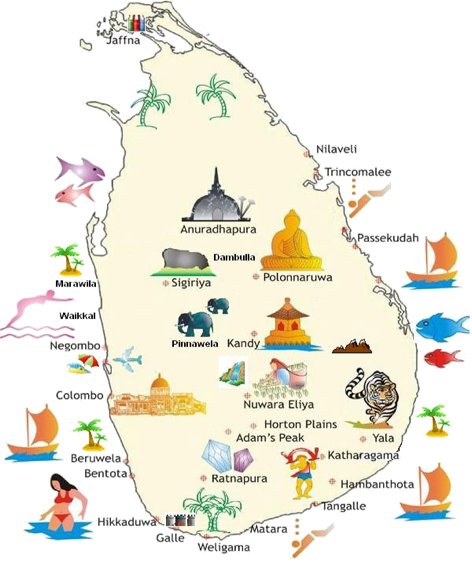
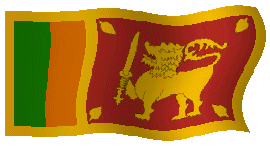
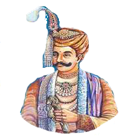
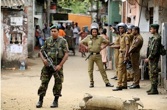


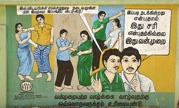
Potuvil road
















